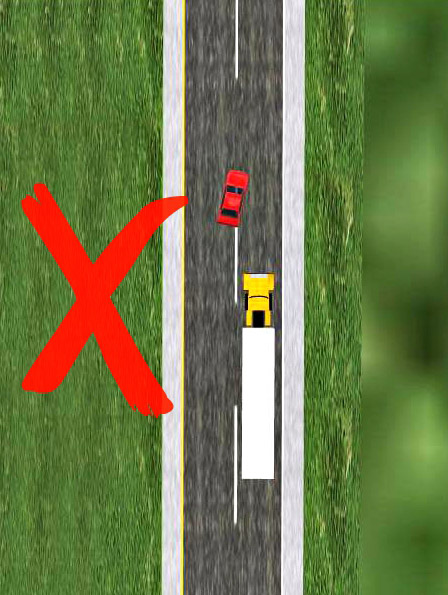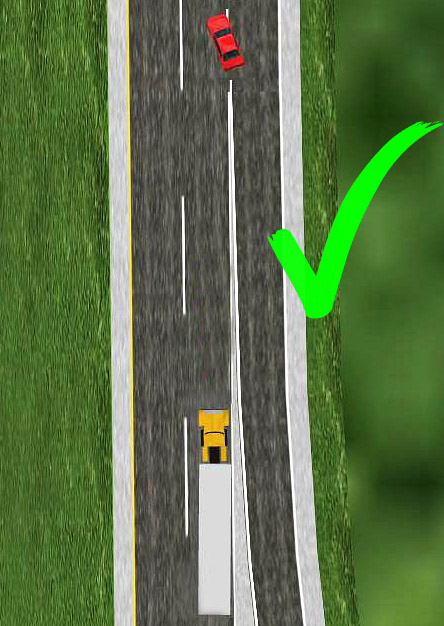
The front no-zone is in front of the truck and should be avoided for two reasons:
- Due to the size and height of the truck, your vehicle can completely disappear from the truck driver's view when you enter the front no-zone. If you cut into the front no-zone and hit the brakes, the truck driver won't see you, and you'll cause a crash.
- Trucks need plenty of room to brake. If you're in the front no-zone and traffic comes to a stop or slows down quickly, the truck may not have enough time to stop, and approximately 80,000 pounds of truck will slam into the back of your car.
Unpredictable and unexpected things happen all the time when you're driving. Animals can run out on the road; there may be debris or other objects on the road that need to be avoided; another driver may cut you off, causing you to slam on your brakes…. If any of these things were to happen while you were in a truck's front no-zone, chances are it would end in tragedy for you and your passengers. Don't put yourself and others in harm's way. Stay out of the front no-zone!
Rule of thumb: Make sure you can see the entire front of the truck cab—from the bumper to the top of the cab—in your rearview mirror before changing lanes in front of a truck.



